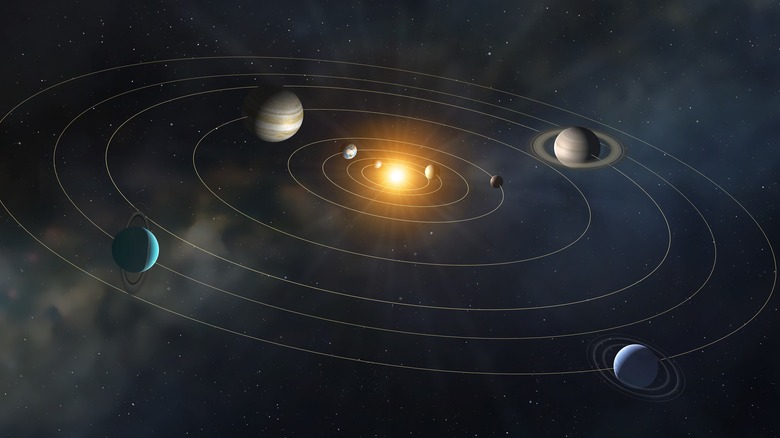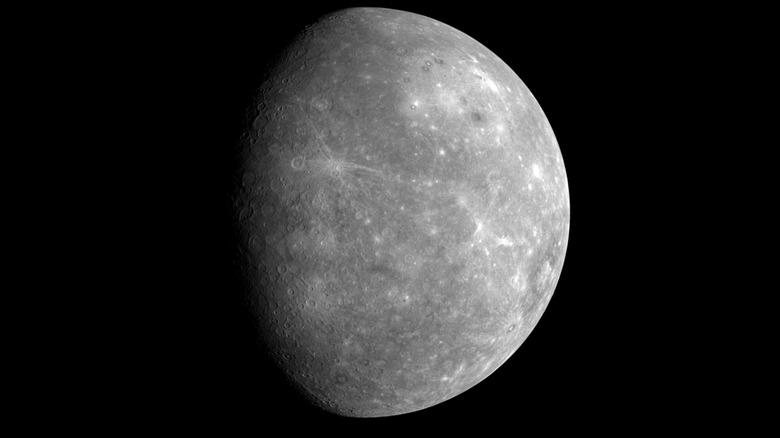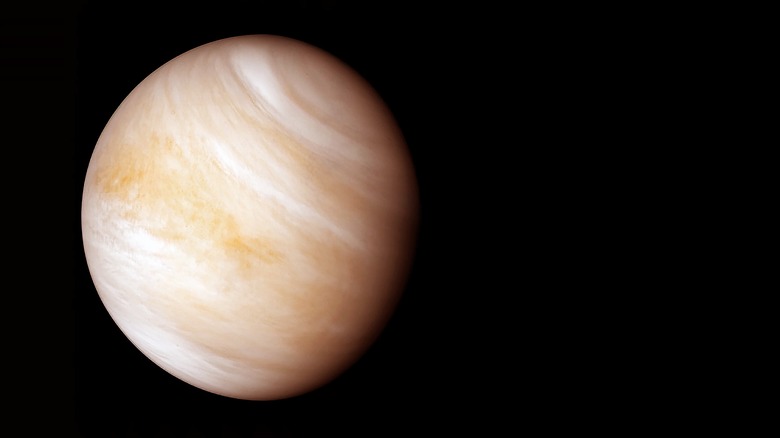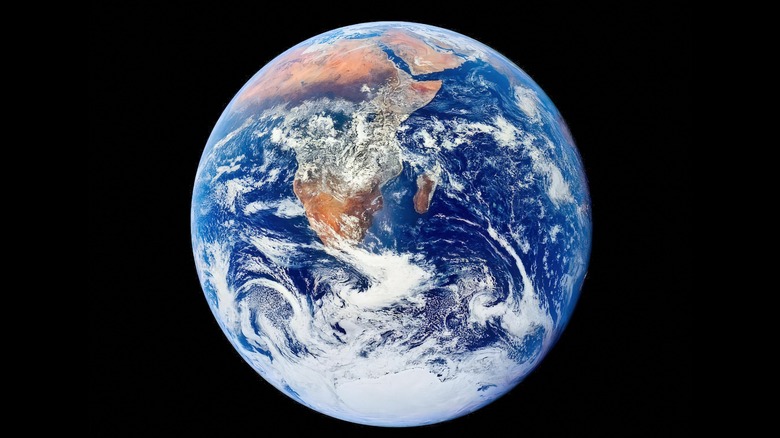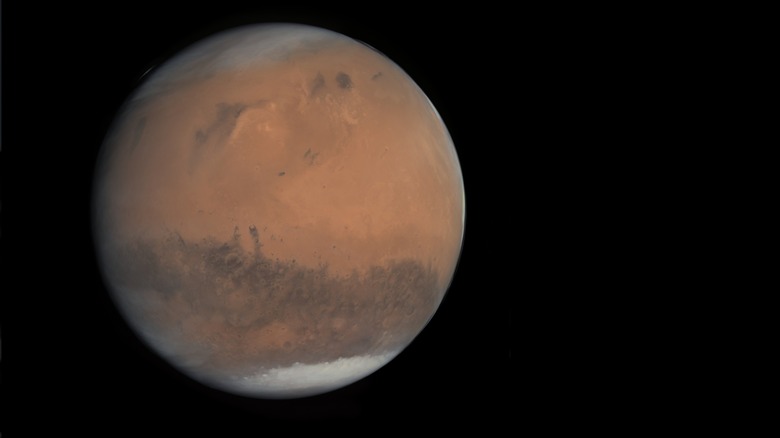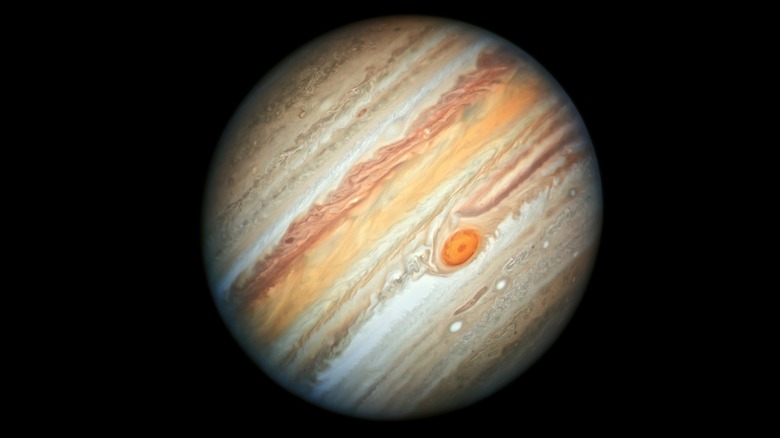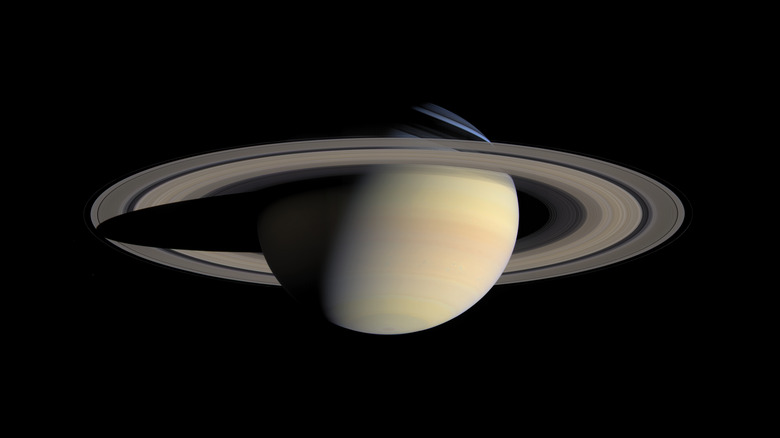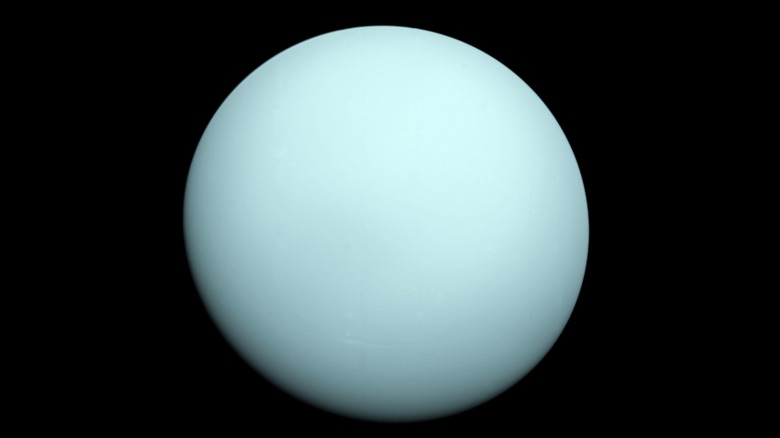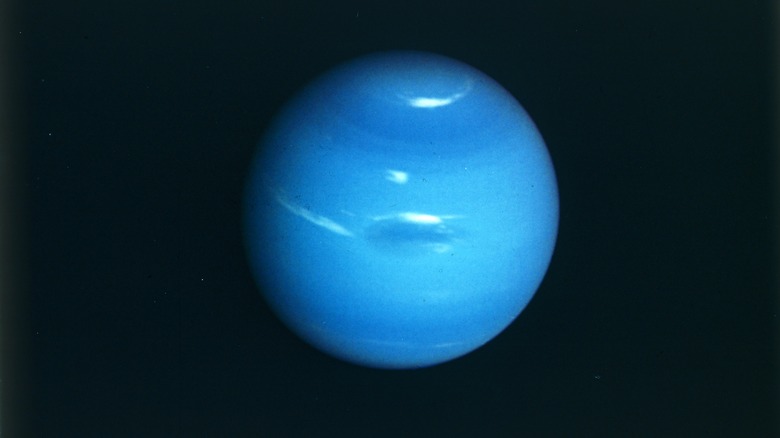The Characteristics Of The Eight Planets
Generations of people have used the planets in our solar system to shape their calendars, faiths, and horoscopes, but in most respects, we are only just beginning to understand our cosmic neighbors. We aren't even sure exactly how many planets there are in the solar system. Although there are currently eight known planets, theories abound regarding worlds beyond our observation. We have also changed our understanding of what a planet is over time, which is why we at one brief point had 10 planets before Pluto and Eris were reclassified as dwarf planets.
The eight planets recognized today can be grouped into two categories. The first four planets out from the Sun are the terrestrial planets, characterized by their solid, rocky surfaces. The final four planets are known as the Jovian planets, or giant planets. These are far larger than the terrestrial planets, but they are less dense because they are made of layers of gas rather than having a solid, terrestrial surface. Between the terrestrial planets and the giant planets is the asteroid belt, a ring of rocky celestial bodies that neatly divides the two planetary classes.
Generally speaking, the closer a planet is to Earth, the more we know about it, which is why we have detailed descriptions of inner planets like Venus and Mercury, while much of what we know about the furthest planets, Uranus and Neptune, is based on hypotheses. Here's what we do know thus far about our solar system's eight planets.
Mercury: small and speedy
Mercury is the closest planet to the sun, orbiting our star at an average distance of 36 million miles. It is named after the Roman god Mercury (equivalent to the Greek god Hermes), who was said to be the messenger of the gods, crossing the world at lightning speed thanks to his winged sandals. Keeping in theme with its namesake, the planet Mercury has the fastest orbital speed in the solar system, moving at 29 miles per second. An entire year on Mercury takes just 88 Earth days to complete. However, a single day on Mercury takes 58 Earth days to complete, as the planet rotates around its own axis very slowly.
Mercury is the smallest of all the planets in the solar system by surface area, volume, and diameter. Its radius of 1,516 miles makes it just barely larger than Earth's moon. Despite this, Mercury is actually the second densest of all the planets, with a large metallic core that takes up most of the planet.
Of all the planets, Mercury has by far the thinnest atmosphere. Its small mass means that it exerts very little gravitational pull, which is required for a planet to hold onto atmospheric gases. Furthermore, Mercury is constantly being bombarded by solar winds. This leaves Mercury unprotected, and its surface is coated by impact craters. The lack of atmosphere also means that Mercury retains no heat, causing extreme temperatures that range from 800 degrees Fahrenheit during the day to -290 degrees Fahrenheit at night.
Venus: too hot to handle
Venus is the second closest planet to the Sun, orbiting at an average distance of 67 million miles. A Venutian year takes about 225 Earth days, but here's where it gets weird. Venus takes 243 days to complete a rotation around its own axis, making Venus the only planet in the solar system where a day lasts longer than a year. Venus has the longest days of any planet, over four times longer than second place Mercury. Making matters even weirder, Venus spins in the opposite direction on its axis compared to the other planets, meaning that on Venus, the sun rises in the west and sets in the east.
Venus is named after the Roman goddess of love and beauty (equivalent to the Greek Aphrodite), which makes it the only planet in the solar system to be named after a female deity. Venus has played an important role in human culture because it is easily seen from Earth. It's the second-brightest object in the night sky after the moon.
Venus is sometimes referred to as Earth's twin because they are very similarly sized. Venus's radius at its equator is 3,760 miles, compared to Earth's 3,963 mile equatorial radius. Conditions on Venus are extreme because it has a dense atmosphere composed of 96% carbon dioxide. This generates a greenhouse effect so severe that Venus is locked in a constant state of extreme global warming. It is the hottest planet in the solar system, with surface temperatures averaging 870 degrees Fahrenheit.
Earth: home sweet home
Earth is the third planet from the sun, the largest of the four terrestrial planets, and the densest object in the solar system. It is the only planet not named after a Roman or Greek deity, instead taking its name from a Germanic word for ground. Traveling at an orbital speed of 67,100 miles per hour, Earth makes one full trip around the sun every 365.25 days, which is why we need to add a Leap Day to our calendars every four years.
Earth is the only planet to have just one moon (although sometimes Earth gets an additional mini moon). At roughly a quarter the size of Earth, the moon has by far the largest size in relation to its planet out of any in the solar system. This ratio actually plays an important role in life on Earth, as the moon's gravity keeps our planet from wobbling too much on its axis, keeping the climate stable.
Earth is exceptional for one obvious reason: It's home! It is the only place in the entire universe that is known to harbor life. Earth's atmosphere, which is primarily composed of nitrogen and oxygen, is crucial to this, as is the fact that 71% of the planet is covered with water. To date, scientists have identified over 1.7 million species on Earth, and over 10,000 more are ID'd each year, but it's unlikely that we'll ever know just how many life forms share our planetary home.
Mars: the red one
The fourth planet from the sun is Mars. With a radius of 2,106 miles, it's approximately half the size of Earth. It makes a full rotation around its axis every 24.6 hours, which means a day on Mars is barely longer than a day here on Earth. Astronomers refer to Martian days as sols, short for "solar days". A year on Mars takes 669.6 sols, or roughly 687 Earth days. Like Earth, Mars has four seasons due to its tilted axis. Mars also has two small, irregularly shaped moons named Phobos and Deimos, which are likely captured asteroids.
Mars is named after the Roman god of war (equivalent to the Greek Ares) due to its red color being reminiscent of blood. Ancient Egyptians referred to Mars as "the red one," and it is well-known by the nickname "red planet". This red coloring is due to the fact that the soil on Mars contains high amounts of iron oxide, the compound responsible for rust.
We know more about Mars than any planet save for our own. It's the only planet that humans have landed rovers on, providing us with a wealth of images and data. It is also the only place where NASA has actually conducted experimens searching for extraterrestrial life. Geological features, such as canyon-like canals on Mars, indicate that Mars might have once had liquid water, and could potentially have harbored life. Some have even theorized that microorganisms could be living on Mars right now, buried beneath its surface ice.
Jupiter: the stormy giant
From Mars, we cross the asteroid belt to the fifth planet from the sun. Jupiter is by far the largest planet, having more than double the mass of the other seven planets combined. Its diameter is more than 11 times that of Earth, and its total volume is over 1,300 times greater than Earth's. Jupiter is so immense that, even though there are 444 million miles between it and Earth on average, it is still the third brightest object in our night sky after the moon and Mercury. It is only fitting that this king among planets is named after the Romans' supreme god (equivalent to the Greek Zeus).
Jupiter is believed to be the oldest planet in the solar system, formed from gases left over after the formation of the sun, and like the sun, it is primarily composed of hydrogen and helium. Deep within the Jovian atmosphere, pressures become so high that the hydrogen becomes a liquid, technically giving Jupiter the largest ocean in the solar system. The appearance of bands around Jupiter is caused by clouds swirling in the atmosphere, and its most famous feature, the Great Red Spot, is actually an anticyclone storm twice the size of Earth.
A day on Jupiter lasts just 9.9 hours, the shortest day in the solar system, but its years are 12 times longer than ours. Due to its mass, Jupiter is the planet with the strongest pull. This has caused it to attract a vast collection of 95 moons.
Saturn: the 'Lord of the Rings'
Saturn is the sixth planet from the sun and second largest after Jupiter. Its diameter is nine times that of Earth, and its volume is over 760 times greater. Despite this, Saturn has the lowest density of any planet, being the only planet less dense than water. Saturn shares many traits with fellow gas giant Jupiter. Both have banded atmospheres produced by weather patterns. In Saturn's case, the winds in its upper atmosphere can exceed 1,000 miles per hour. Another similarity between Saturn and Jupiter is their fast axial spin. A day on Saturn lasts just 10.7 hours, but its year takes almost 30 Earth years. Saturn was even named after the mythical father of Jupiter (equivalent to the Greek Cronus).
Saturn's most iconic feature is its rings. All of the giant planets have ring systems, but Saturn's is far and away the largest. There are thousands of rings surrounding Saturn, made from the debris of comets, asteroids, and potentially even moons that were broken apart by the planet's powerful gravity. The pieces of ice and rock can range in size from as small as a grain of dust to as large as a mountain on Earth.
In addition to its ring system, Saturn has the most moons of any planet in the solar system, with 146 known moons. Its largest moon, Titan, is the only place in the solar system besides Earth known to have liquid rivers and oceans, and is considered a potential site for extraterrestrial life.
Uranus: the sideways planet
Uranus is the seventh planet from the sun. It is the third largest planet by diameter, but only the fourth largest by mass, as it is actually lighter than Neptune despite being slightly wider. Uranus is a giant planet, but it belongs to a different class than Jupiter and Saturn. Jupiter and Saturn are gas giants, composed primarily of hydrogen and helium, while Uranus is an ice giant, and is composed of heavier elements like oxygen, nitrogen, carbon, and sulfur. The planet appears blue due to methane in its atmosphere.
Uranus is named after the Greek god of the sky, and is the only planet to have a Greek name. If Uranus followed the Roman naming convention of the other planets, it would have been called Caelus. While the first six planets have been known since ancient times, Uranus was the first to be discovered by telescope, identified in 1781 by William Herschel.
The most notable feature of Uranus is its lopsided axis, tilted to an extreme 97.77 degrees. The planet practically rotates on its side, and its two ring sets and 28 moons orbit it in the same perpendicular plane. Astronomers suspect this may have resulted from a collision with a massive celestial object or the gravitational force of an ancient moon. A Uranian day takes 17 hours, and it takes 84 Earth years to orbit the sun. With its wonky tilt, the planet experiences the most extreme seasons in the solar system, with sunless winters that last 21 years.
Neptune: far, far away
Neptune is the eighth and farthest planet from the sun, orbiting at an average distance of 2.8 billion miles. It would take a staggering amount of time to travel to Neptune, and as of this writing, only one spacecraft, Voyager 2, has made it that far. A year on Neptune lasts 165 Earth years, longer than any human has ever lived. The planet has an axial tilt similar to that of Earth, but each season on Neptune lasts more than 40 Earth years.
Neptune is named after the Roman god of the sea (equivalent to the Greek Poseidon), which is fitting because the planet is as blue as the ocean. This is because, like Uranus, Neptune's atmosphere contains methane gas, which absorbs red light and reflects blue light. Also like Uranus, Neptune is an ice giant. Neptune is the smallest of the giant planets by diameter and second smallest by mass, but it is actually the densest giant planet of all. Astronomers aren't entirely sure what lies beneath Neptune's thick atmosphere, but some suspect that the whole planet could be covered by a boiling ocean.
Neptune's existence was actually predicted before its discovery. After Uranus was found, astronomers noticed that its orbit appeared to be influenced by a gravitational pull from deeper in the solar system. In 1845, astronomers Jean-Joseph Le Verrier and John Couch Adams both calculated the location of an eighth planet. The following year, Neptune was located by telescope, just one degree off from the astronomers' predicted position.
